I sat distraught and exhausted in the American Airlines Admirals’ Club, staring dreamily at my laptop screen. I was applying the final touches to my enduring midterm — a take-home test for an MBA class at the George Washington University Foggy Bottom campus, a stone’s throw from downtown DC.
I had heard it several times over — almost in a trance — every excruciating syllable as I read and re-read the key paragraphs of my take-home mid term for my Technology Entrepreneur class at the School of Business.
Sooner or later, I had to click the send button — regretting the hours spent procrastinating when I was actually planning my big trip. The moment was here, I was off on my first Spring Break in nearly 20 years. Grad school is tough, but it is even tougher at 42.
At the white sandstone building at 1600 Pennsylvania Avenue, hundreds of kids from all over the country rolled Easter eggs on the South Lawn, a tradition since the Civil War.
Truly I had many pressing things I could be doing. But the final announcement had already echoed eerily from the Intercom that my AA flight from JFK was ready to board immediately. Once again, I was in a rush to go somewhere I wasn’t sure I should be going in the first place. And in this case, I was heading to earthquake-ravaged Port-au-Prince, a land urgently in need of relief.
To say that this trip was rushed and unprepared would be a gross understatement. Not only had I not properly done my research, I decided less than a week ago to make this journey. Before this tumultuous week of midterm preps, the plight of Haiti from the recent Jan 12, 2010 7.0 magnitude earthquake wasn’t in the forefront of my mind. I had seen the gripping scenes on CNN, and the USNS Comfort Hospital ship was anchored in the Port-au-Prince harbor providing medical care. But still the Haiti disaster seemed so distant and surreal.
It was only when I was sitting home studying for my midterm, wondering what I would be doing for spring break that I heard her distant call. I didn’t have any immediate plans and Haiti seemed like the right place to be. Admiral Robinson had shared stories of when he stood up a fleet hospital in Haiti during a six-month deployment.
“Medicine is a common language that all people understand, and it is a way to bridge differences,” said Robinson. “Our team worked in a very difficult environment with a massive logistics challenge and immense needs. We performed life-saving work and also made a huge difference in people’s lives.”
One of the first things I did was post a question on Haiti Rewired:
“I’m planning on going to Haiti for seven days. Will there be any food and water there that I can purchase?”
Within an hour came a reply from one of the site’s administrators: Rick Davis:
“Yes, there’s food and water that you can purchase. Why are you going?”
Then came my response:
“To cover the plight of the people and their struggle. To tell their side of the story.”
“There’s plenty of media that’s already down there. The place is a mess and you could put yourself in danger. IMO, you shouldn’t go.”
* * *
I boarded a flight from Reagan with a layover in JFK. Just packing for this trip and bringing everything that I needed was a daunting challenge in and of itself.
But what was even alarming was the fact that I didn’t have a place to stay. Not knowing anyone there, I was literally taking a step of faith by embarking on this frenzied trip. I had a sleeping bag and a mosquito net, but those two things could not protect me from the danger that lurked around the corner at nightfall.
Upon arriving at JFK, I checked the monitor and noticed a direct flight leaving NYC for Port-au-Prince. Terminal 2, 1:30 PM it flashed. My flight to Santo Domingo would be leaving an hour after that. So I rushed to that gate in hopes of meeting others and perhaps secure a place to stay before I arrived.
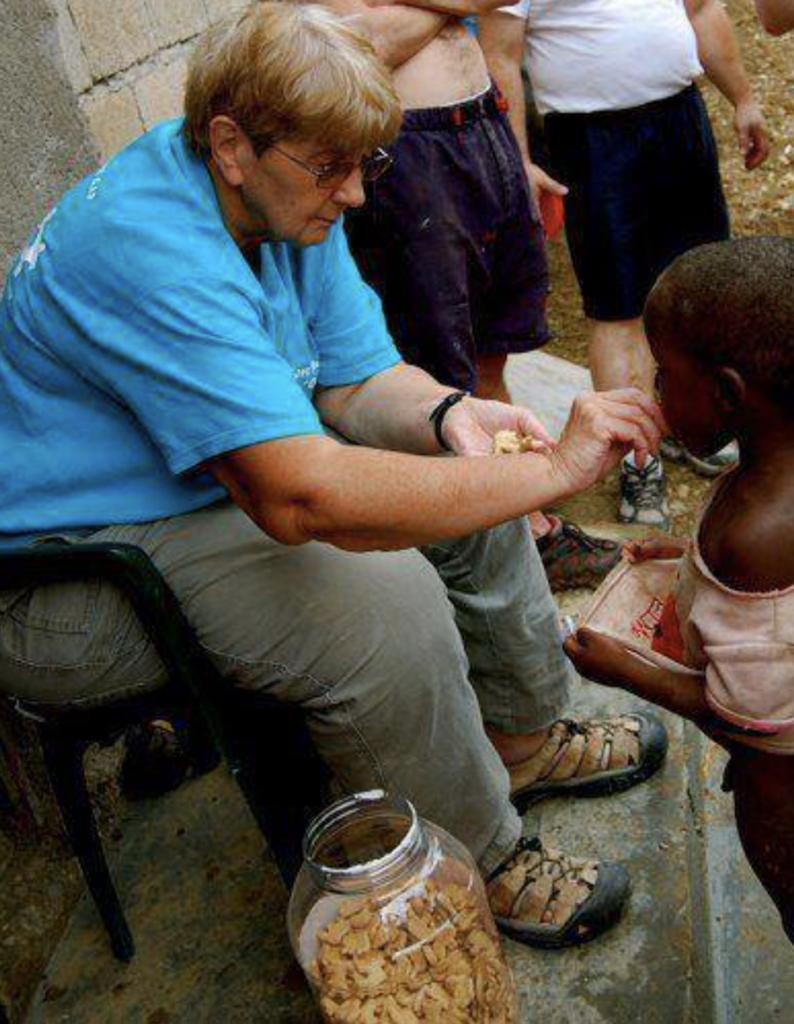
Eunice Tasson is a sister from Massachusetts. A spry women who both showed compassion and leadership, she had been visiting Haiti since 1984. As the founding director of the Church Outreach to Youth Group (COTY) in North Adams, Massachusetts, Eunice leads a group of young people up to the mountains several times a year. Their destination is Desab, a beautiful village located six miles up a dirt path in the mountains, a village without electricity, without running water, but plenty of clear, blue sky and orchard trees.
I was elated to meet Eunice, and she was astonished that I was going to a foreign land in peril without having a place to stay.
“That’s reckless. I’ll make a phone call right now.”
Her call was to Veniel Jean, the manager of Wall’s International Guest House. Once a popular and comfortable place to stay, the guest house was almost completely destroyed with hundreds inside. Many escaped but tragically five people (three guests and two staff) were buried under rubble.
By the time I headed over to the Admiral’s Club to finish my midterm, I received this email:
Hello Chito ,
Thank for your interest to stay at Wall’s International Guest House. The people there did not sleep under room, they prefer to be outside under tents. If you would like to be under tent in our secured parking lot , we can reserve a place for you.
We charge $US 35/person include breakfast and dinner, If you would like we will come to pick you up at the airport please let us know your flight number the cost is $US 20.
If you have future question email us.
Veniel Jean
Manager
Wall’s International Guest House
8,Rue Mackandal Delmas 19
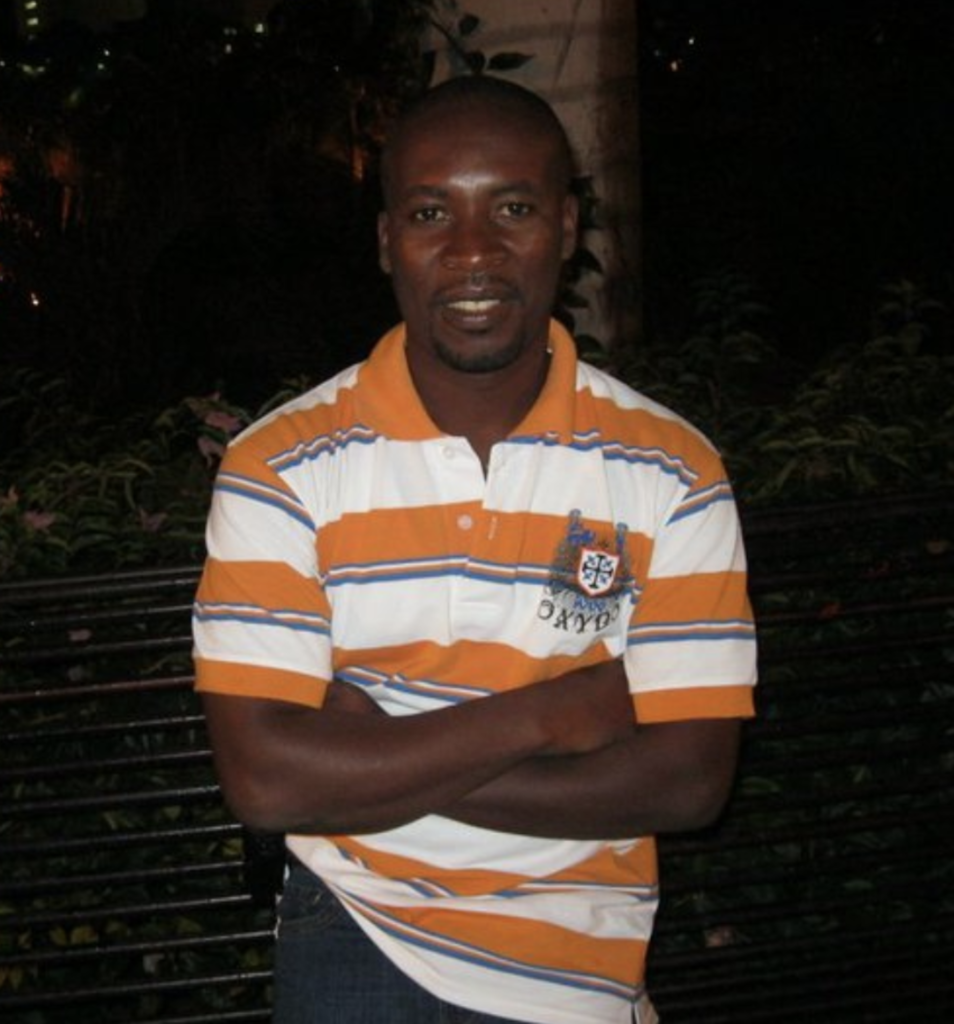
I was elated and thankful. Sister Eunice Tasson was my angel and answer to my prayers, and Wall’s Guest House would provide a roof over my head and provide necessary food and protection.
The first stop on the flight was Santo Domingo, Dominican Republic; Santo is a busy, breezy metropolis where people are friendly and there are lots of surprises at every block.
I spent the night in Santo in my compact rental, first on the beach, then in the airport parking lot. I was way too exhausted to worry about danger. If someone came at knifepoint, I would be too tired to defend myself anyway. Awake for nearly 48 hours, I would soon be facing another bout of sleepless nights, under a droopy, leaky tent, the sound of helter skelter hunger lurking all around me.
I managed to pop into downtown, through the Zona Colonial and under the massive Asian arch with dragons, lions and other Chinese allegorical sculptures and plants that evoke the culture, tradition and philosophy of over 60,000 Chinese/Dominicans.
I met several Chinese expats who have built and developed a Chinatown that stretches four blocks, boasting as the 8th largest Chinatown in the world. Along Avenida Duarte, there were several dozen Chinese-owned businesses: restaurants, laundries, supermarkets and video rentals. I spoke to a handful of them and examined and tasted their food — it surpassed my expectations — wasn’t the deep fried chicken I expected, but authentic Chinese food with sweet and sour recipes, General Tso’s Chicken and tofu balls dowsed in spinach soup. I was greatly satiated and I loaded down for my big trip the next day.
First thing next morning, I am sitting aboard an American Eagle shuttle, waiting on the tarmac because an announcement was made that the plane was over 600 pounds overweight, and we cannot take off unless we shed off some weight.
As the plane and ground crew worked out a solution (they simply removed a dozen bags off the plane), I kept my fingers crossed, hoping that my sleeping bag, inflatable pad, and mosquito net would make it to Port-au-Prince with me.
I managed a quick nap on the 50 min flight to PaP, which was ideal because in the day’s ahead, I would be seriously deprived of sleep.
When I arrived in country, the views were dismal, and bleak. As I looked around to assess the damage a tear rolled down my cheek, and I was certainly not emotionally prepared for what lay ahead. True to form, Veniel was at the airport to welcome me.
“Welcome to Haiti. We’re thankful you’ve decided to come this far to help out.”
I boarded Veniel’s pickup truck and watched in horror as I witnessed thousands and thousands of families surviving, desolate and barren with nothing for comfort, except a piece of canvas and perhaps a filthy mattress they carried from the dump.
Tap-taps inched their way in heavy traffic. The brightly colored pickup trucks with a dozen passengers sitting on two facing benches on the truck bed. The name ‘tap tap’ is derived from passengers use of their coins to tap on the side of the truck to inform the driver that they need to be let off.
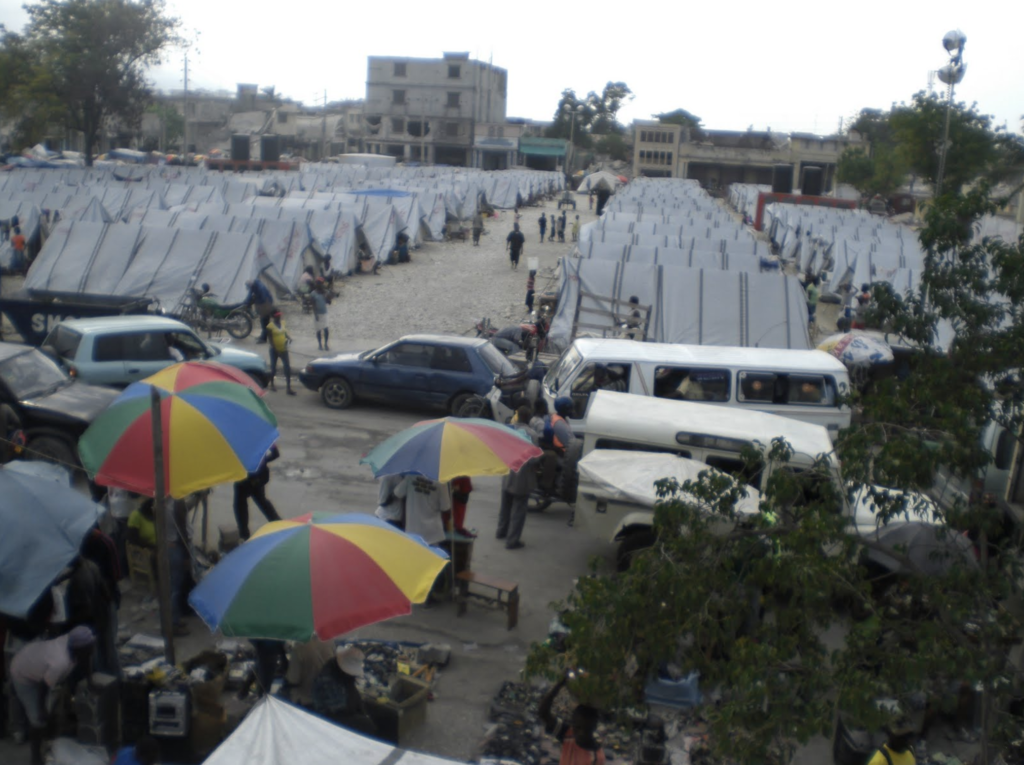
Panhandlers were calling out as we passed, pleading for bread, water, flip flops, anything that we could possibly provide. I reached deep to grab all the Gourds I could find.
“Mèsi,” I said about the only French Creole that I knew.
In the distance, several men from the crowded encampments were burning trash. The raunchy smell of smoke and debris was so pungent, my eyes began to well up. Trash was everywhere — on the streets, on the sidewalks, human waste — the smell of desolation and dirt mixed with misery.
Sadly, Haiti a nation of 10 million, doesn’t have a trash treatment plant. The residents just dispose their litter and human waste on the streets, wherever they can. They build up in the camps causing a pressing health threat spreading diarrheal illnesses and the stench of decomposing bodies that just won’t disappear. With the coming of the rainy season, the wastes attract pests that can easily spread malaria with the coming of the rainy season. Sometimes, you see an unattended child standing in a pile of trash. No one turns an eye; no one is concerned. This is Haiti — the poorest country in the western hemisphere (before the earthquake). Even “Haiti’s pigs live better than this.”
And when it rains, the water runs through the concrete canals through the city and out to the sea. With it, it’s combined with the waste water from sinks, showers and toilets contaminating the drinking water and exacerbating the typhoid problem.
There were over 700,000 displaced people living in make-shift camps. Just emptying latrines was a big issue. Without a sewage treatment plant, trucks often take the waste to the Troutier trash dump near the slums of Cité Soleil on the city’s ragged edge.
Now, the earthquake has created a huge security vacuum. More than 4,000 prisoners escaped from the city’s penitentiary. They returned to the slums now loaded with guns.
“Word of advice – stay away from Cité Soleil,” Veniel said. “I wouldn’t go to the 34 neighborhoods, even if you offered me a million dollars. Even the UN stays away.”
“How safe is the area around the Guest House?”
“When walking around Delmas, always keep an attentive eye on who is around you and anyone that looks suspiciously or are staring down at you. If you notice someone lingering around, then another may be watching you. They are likely armed and tapping away on their cell phones to their gang boss to see whether you are worth the trouble and to see how much they could get if you’re kidnapped.”
20 minutes later we arrived at Walls – a sanctuary in a sea of debris. Sister Eunice and her entourage had already settled in and were meeting with the owner, Betsy Wall, and a few aid workers
“This is really eye opening Veniel. After such a deadly disaster, it’s amazing that you’ve been able to reopen the compound in a matter of weeks and accept aid workers.”
It took a moment for Veniel Jean to realize what had just transpired. It was Friday evening. Veniel had strolled down the road visiting the city’s pitted exhaust-chocked main thoroughfare Delmas 33, shopping for items for the house at the One Stop Market when the ground started to quiver.
What was that? No way. This was a big one. Didn’t know something this strong could happen this far south.
Veniel instinctively ran outside without thinking whether he was running to safety or danger. Was relieved to see his guests who just arrived from Canada running for dear life. He looked up at the sky and back at the building and it seemed like the world around him was starting to come to a head spin. After about 30 seconds, the main shock ended. But then a series of after shocks followed.
There were people crying, then the screams laced with blood, immersed in pain. 10, 20, 30 seconds, the shaking got stronger, more consistent; earth felt like jello now, buildings began to pancake over until they just crumbled like sand castles on Wahoo Bay.
At this point every structure around had leveled to dirt so Veniel would now be able to see for miles from coastline to mountain front, if it wasn’t for the fact the sky was thick with dust swallowed by a pillar of smoke. Why this, why us? The silent voices struck back.
So Veniel did what any caring person would do. He ran around the ruins, honing in to screams and started picking up rubble to get as many people out as he could. The Canadian guests stuck around giving Veniel a hand.
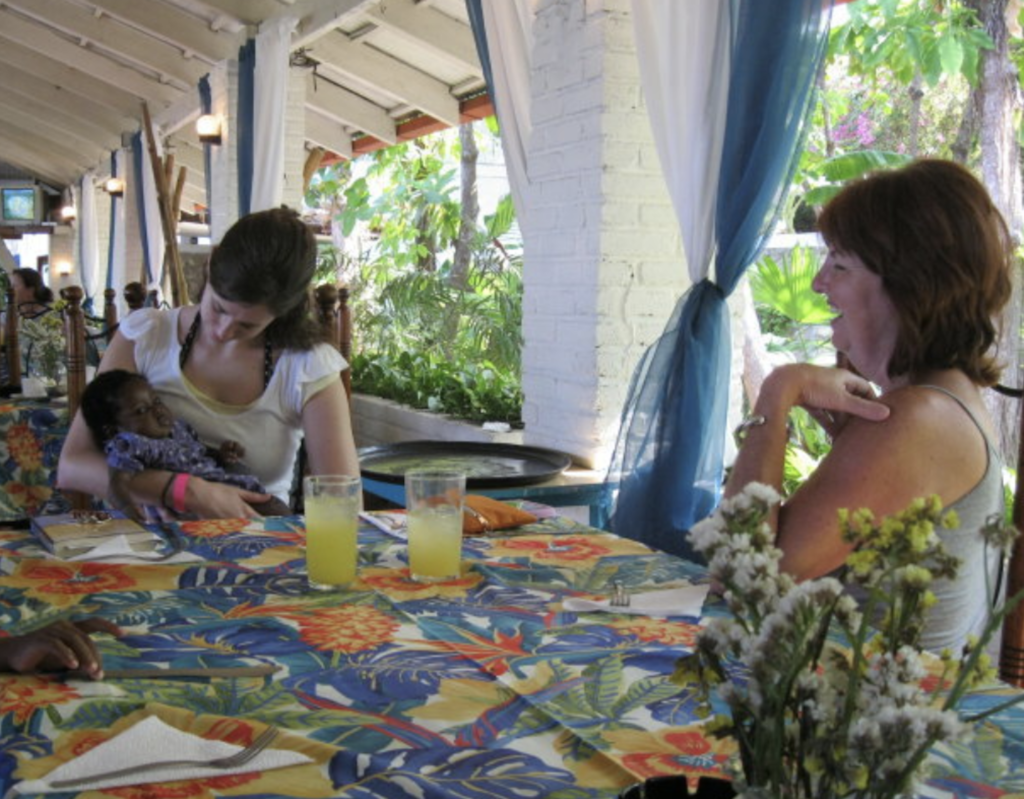
Betsy Wall and her daughter Alexis had just arrived from Canada two hours earlier with a bunch of aid workers, all excited about working in Haiti and all determined to make a difference during their two-week stay. Betsy, the Executive Director for the Foundation for International Development Assistance, was just in Haiti three weeks ago and had been coming back and forth for nearly 40 years. The humanitarian work started with Betsy’s parents, Jack and Anne Wall from Ontario, Canada who sold most of their possessions and moved to Port-au-Prince in 1984 to help the poor. It was indeed a bold sacrifice for the Walls who were both in their sixties at that time. Betsy has continued the family service dedicating her life by introducing technology and resources so that communities all over Haiti can overcome adversity and create self-sufficiency. And after the quake, the country would need Betsy’s services in a more urgent way.
It was 4:30 PM. Being awake for over 12 hours, Betsy and Alexis were simply beat. Air Canada 950 had been delayed on the tarmac about 15 minutes due to an electrical light glitch. Upon retrieving their bags from Toussaint Louverture International, Betsy and her large entourage of aid workers worked their way through the cacophony of cars and bikes on Delmas to the inviting sanctuary and secure gates at Walls. The hotel was only 10 minutes from the airport and $35 a night also provided two meals, unlimited Culligan water, WiFi, a hot shower and close camaraderie amongst missionaries and aid workers from the US, Canada and Europe. This was a great deal in comparison to the higher prices of the Montana Hotel up the hill towards Petionville.
After making her obligatory round of greetings with the hotel staff, Betsy decided to take a quick nap before dinner. The team had a lot on the plates the next day. Little did they know they would not sleep again for 48 hours.
Meanwhile, other members of the team decided to take a dip in the pool and cool down with some cold refreshments. The succulent aroma lime chicken with rice and beans drifted up with the seaward breeze. A couple of Canadians enjoyed the pungent tang of the sea while relaxing on the rooftop balcony overlooking the pool.
In the kitchen, both Simerite and Marie Franse were cutting fresh papaya to serve to the guests. They labored hard ensuring everyone was well fed and keeping the lodge spotless and tidy.
Martine Garneau, a volunteer with Mission Corail-Haiti, who also flew in on the Air Canada flight that afternoon was in the pool relaxing with her fellow volunteers.
A fly was buzzing around and wouldn’t leave Martine alone. Mysteriously, it just fell and landed on her beer. Camil Perron, 60, being the gentleman that he was offered to go into the kitchen to fetch another cold one. It was at that precise moment that the earthquake rocked the city bringing down the entire guesthouse.
Betsy was sound asleep when the walls came tumbling down. She was fortunate to get up the moment she heard the walls shake. Her instant thought was that a large truck had slammed into the pool wall. But then when walls and ceilings began crashing down, she dashed out with Alexis by her side.
She had made it just in the nick of time. Another fraction of a second and the entire main guest house would have completely collapsed. Meanwhile the earthquake struck with such force that it completely emptied all the water from the pool. And when the main guest house came down, it collapsed on top of the kitchen. Those in the pool survived. Those in the kitchen, including Perron died.
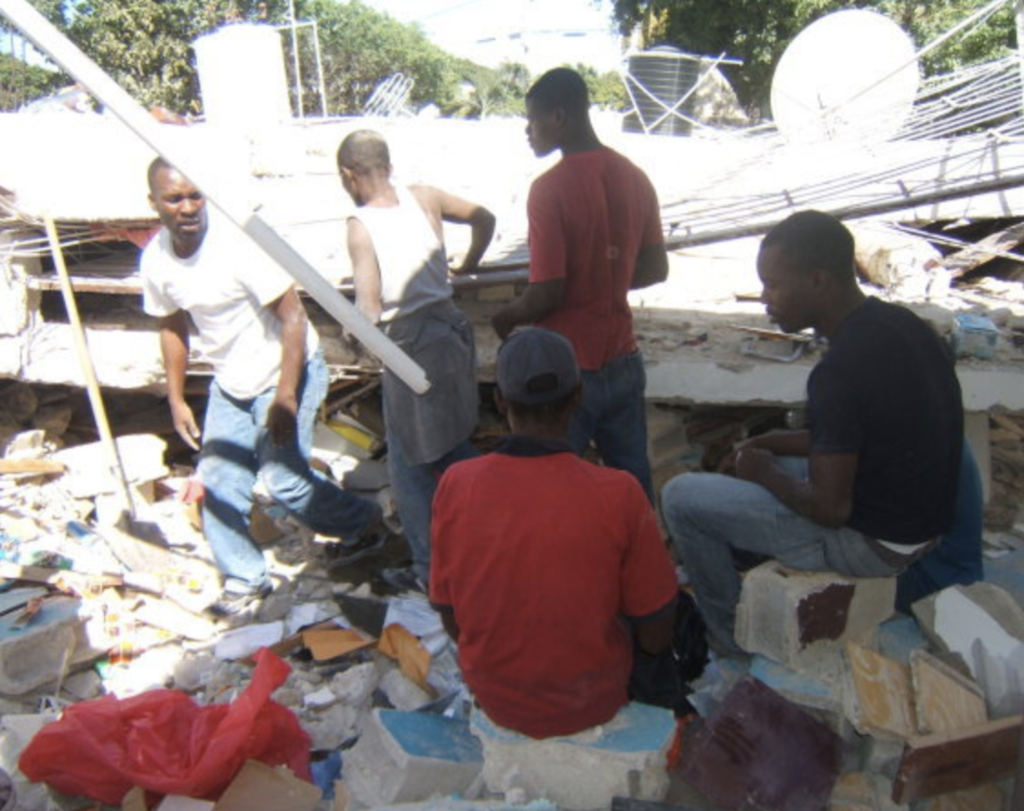
Betsy quickly gathered the team to ascertain who was alive and who was trapped. Shortly after, Veniel and the group who had gone into town arrived. Betsy was thankful that Veniel was safe and wanted to know where she could evacuate her guests to.
“The whole city has been destroyed,” Veniel added. “We could take them to the Montana, but I’m not sure she’s still standing.”
Meanwhile Veniel and staff continued to work endlessly, chipping away at the rubble to rescue and recover the five that were missing.
But unfortunately several hospitals had been seriously damaged and others were swamped with casualties. Haiti would need assistance and within 76 hours, the USNS Comfort, the 1000-bed floating hospital with 550 medical personnel would set sail from Baltimore.
“You will see tragedy of unimaginable proportions and our humanitarian mission there will be a life-defining assignment for you in many ways,” said Vice Admiral Robinson as he spoke to the medical staff and crew.
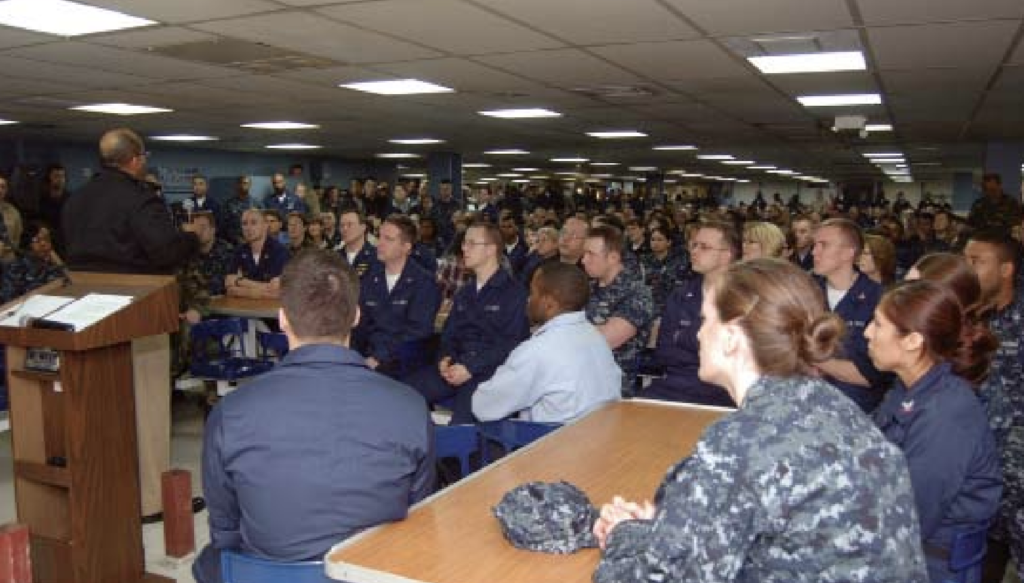
“What an incredible story of courage,” I said to Veniel and Betsy. “It’s miraculous that so many survived.”
The next day, I met two missionaries: Marvin and Mickey. Marvin was older, subdued, experienced. Mickey was more outspoken, stocky, 6′ 3″ a former Marine who still looked it, if it wasn’t for his long locks that rolled down to his shoulders.
They were brought in by Pastor Luc who had picked up the missionaries at the airport. For someone who had just experienced such a catastrophic loss, Pastor Luc carried a magnetic aura of serenity that surprised even his biggest doubters.
“Nice to meet you Pastor Luc. It’s a tremendous honor. Veniel has told me so much about you.” Pastor Luc St Felix is a gentle, kind-hearted minister whose complete destruction of his three-story church not only affected his intermediate family but his entire church family.
And the rains bring not only flooding, they don’t just wash away the only pieces of shelter they hold dear to their name. The rains brings diseases, of all types ever imagined or wanting to forget. Dysentery, Typhoid, Malaria. Those who were fortunate to survive the earthquake, those who lived to bury their dead may be faced with another calamity of epic proportion later this spring. The torrid rainy season will bring days, nights, sleepless weeks of rain to the tippy point of desperation that even the beating sound of barrels of fist against a strained canvas tarp will be endearing sound compared to the brush of torrid downpour or horizontal rain at the edge of a Haitian horrid nightmare.

Later that day, I visited Pastor Luc St. Felix’s church to see first-hand the destruction and to hear from him what we can do to help the cause.
As we stood next to the mountain rubble that used to be the 3-story Port-au-Prince Pentecostal church, we are forever touched by the tremendous fortitude of his congregation.
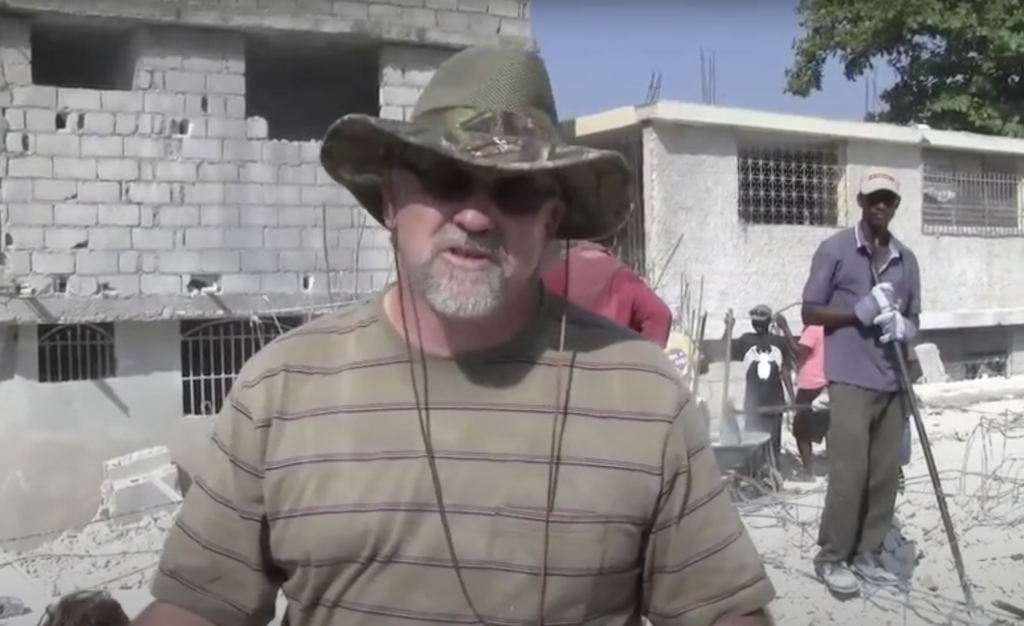
One feisty jackhammer cranks away, smashing full-sized walls into a clump of bricks and large, jagged balls of concrete and rebar. But the main tool of the undertaking is not machine or automation but one rusted out wheelbarrow and a dozen shovels loading pile after pile of dirt and debris only to be dumped just 20 feet away. And the guy in charge of the clean-up effort is afforded the honor of been the boss mason. It’s important to properly train the masons. So many were killed because of shoddy workmanship and no regulation.
Here at the church, everyone helps out. There is one lady wearing a night gown, a wide-brimmed hat and flip flops that had seen its last days, sometime last year. Initially, there appeared that there was little for her to do. Yet, she methodically bent over and grabbed whatever pieces of rubble she could carry.
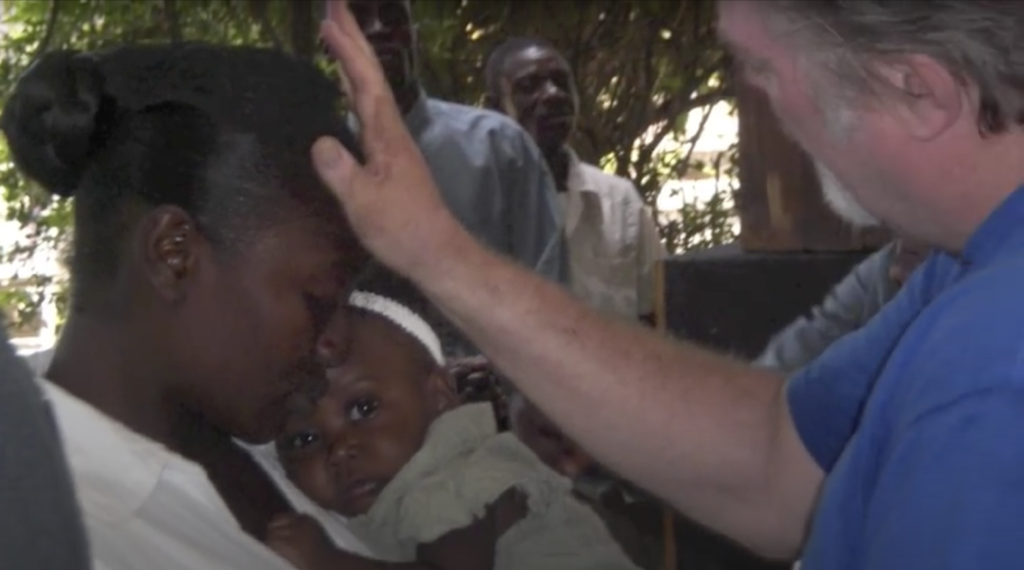
People of all ages claw away with their own hands the debris — anything they could do to make a small difference. In the back, several ladies helped out, concocting a nice pot of bean soup and stew. They were cooking on a large stainless pot over charcoal and wood. Although, the cooks labored hard, I wouldn’t define it as tasty — I personally don’t think I would eat it. But if my stomach was growling like theirs, anything that nourished my body was fine cuisine for me.
Down the road a group of about a hundred local workers, dressed in yellow T-Shirts and aptly called “yellow ants” work seven hours a day, breaking only once for lunch. Their compensation – $5 a day, enough to buy two meals, if they’re lucky.
Already the church is on the second round of debris removal — which was positive news, considering that the debris had already piled over rooftops, jagged pieces of rebar, so flexible that you could easily bend it 90 degrees with a quick flip of the wrist.
“Pastor Luc, what do you need the most? Would you like a team from the US to come down and assist with debris removal?”
“Yes, that would be great. I have a team of 20 plus coming from Alabama tomorrow. Some will be doing medical work.”
“But I also need money to rebuild and my people need tent and flip flops. Pastor Luc had lost several of his congregation to the earthquake — a few were still buried in buildings. But he would not lose hope. He would keep his faith that his church will be able to clean up and rebuild.
“After all, “The church was too small anyways. We don’t need to just rebuild. We need to grow!”
On Mackendall Road, a hapless throng of kids were guzzling water from the ground, splashing grimy water from the sewer. A lack of clean water is causing a rampant dysentery and typhoid problem in Haiti.
“Thank God cholera has not surfaced yet,” said Pastor Luc. “My plan is to dig dozens of wells throughout Haiti to give thousands of people clean water.”
On Sunday morning, we returned to Pastor Luc’s church. Over 100 worshippers showed up at the dirt lot behind the crumbled buildings, dressed in Sunday’s best. Gone was the solid oak alter and maple pews. Pastor Luc paced back and forth showing compassion to members of his congregation while they sat on whatever they could find from the wreckage: folding chairs and chunks of rubble.
We were deeply touched by their spirit and compassion that the congregation exuded.
“This building has been destroyed,” said Pastor Luc. “But the church, our people. The church is not destroyed. We will become stronger.”
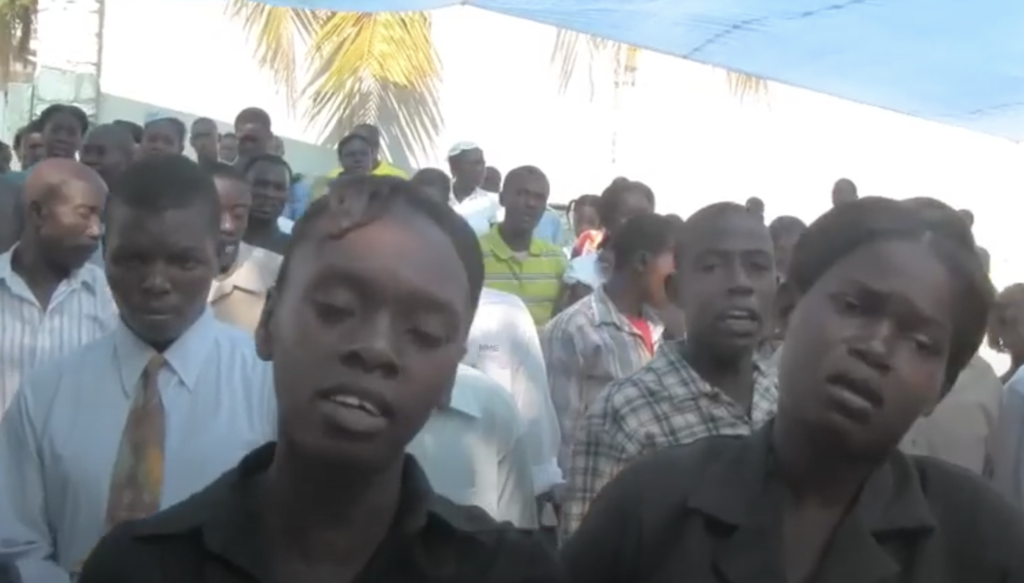
The day after tomorrow, Pastor Luc would be heading up the mountains with Pastor Marvin and Mickey to visit three different villages. Some very remote, they are a stone’s throw from the Dominican Republic. In the villages, Pastor Luc conducts a feeding program that feeds 43 village churches, 13 village schools where 500 children are fed twice a week. Food is never taken for granted in this desolate country.
I wanted to come along, but I would miss my flight home. My particular calling during my disproportionately short trip to Haiti had yet to be determined, but I slept all right because I knew that I would find my calling.
The next day, the anticipated downpour at dawn rocked my frail tent like a bucket of hail crashing down on a hot tin roof.

I tossed and turned and rolled as much as my sleeping pad could take. And the rains bring not only flooding, they don’t just wash away the only pieces of shelter they hold dear to their name. The rains brings diseases of all types ever imagined or wanting to forget — Dysentery, Typhoid, Malaria. Those who were fortunate to survive the earthquake, those who lived to bury their dead may be faced with another calamity of epic proportion later this spring. The torrid rainy season will bring days, nights, sleepless weeks of rain to the tippy point of desperation that even the beating sound of barrels of fist against a strained canvas tarp will be endearing sound compared to the brush of torrid downpour or horizontal rain at the edge of a Haitian horrid nightmare.
Suddenly like a bases loaded walk at the bottom of the 9th inning, the skies stopped pouring overtaken by the freshness of a rich dew drop on a fresh spring petal. Even the tattered sun took an occasional peek through a musky cloud cover offering hope and a new attitude.
Around the campground, a bold rooster cranked its rich, deep horn, signaling to the rest of the world that the night had drawn and it was now time to start a new day and earn a day’s wages, even in a city where work was almost non existent, even living was day by day
Then I popped out, greeted by wetness that made me feel freshly renewed, the aroma of spring, soaked wood chips, like a tropical waterfall amidst a rich, thriving rain forest in the middle of some Caribbean isle.
Back home, the weather was warming drastically, around the tidal basin, the first buds of cherry blossoms were popping, their petals gleaming — a welcomed harbinger of spring. Baseball and half smokes were roasting. Here in Haiti, the welcomed rains brought clean water for washing, for drinking, to cool off the after a long day of scorching heat and harsh, muddy humidity. But in conjunction with the rains come the deluge, the dreaded diseases, the dawn of a new season of bitter challenges.
From village to neighborhood, block to block, ramshackle tent city to supposed village, corner upon blunted corners, people are spread out in all shapes and directions wherever existence will allow it to thrive. They are utterly surviving on the streets not even a blanket to cover their souls from the torrential downpours, but perhaps a tattered piece of canvas strewn together by some duct tape or jagged pieces of wood or anything that closely resembles a possible solution or a cure. Here in Port-au-Prince, anything goes. A tarp tied together with rigid pieces of PVC molded in the shape of a shelter becomes suddenly a marvel of 21st century engineering. Here in this country of dread and destruction, improvisation takes a new name, resources clawed out of dumpsters and trash from supposedly middle-class denizens, suddenly becomes something to sit on, something to put on, something to make life better to see yet another hopeful sunrise, another bitter sun fall.
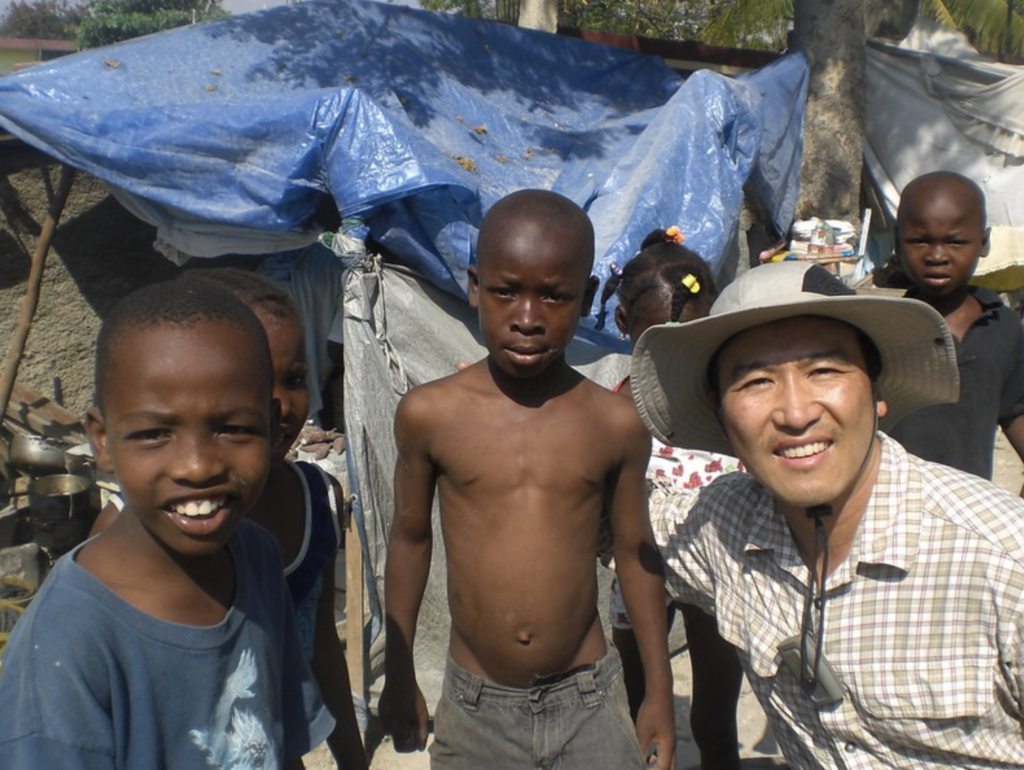
In the immediate aftermath of a disaster, like the earthquake in Haiti, the need to communicate is immense. From the search for loved ones, to the coordination of humanitarian relief, to simple messages of “I’m alive,” between family members.
When walking around the village, I had an opportunity to sample a Haitian mud cake. No, this is not the fudgy chocolate cakes originated from the southern states of the Mississippi River. These cakes are made by mixing a special type of mud, rich with calcium, with salt, margarine and water. It is stirred with a batter, spread on large sheets then dried in the hot sun. This delicacy called Galette is a source of nutrition for the poor, and in Cité Soleil, selling mud cakes is quite profitable especially since any expenses incurred is close to zero. Sadly, many Haitians thrive on only $2 per day. Eating dirt cannot be good for you. Soil is contaminated with viruses and bacteria, not to mention toxins. At worst, you could get poisoned. At best, it could lead to gastrointestinal problems or diarrhea. Luckily, I survived my trip without once getting sick. And I did not feel that this countries problems would be in my rear view mirror.
“So what long term needs are there for the people of Haiti?” I asked Veniel.
“After rebuilding, and a steady supply of clean water and sanitation, a way for Haitians to communicate with each other and the rest of the world so we can continue to innovate and learn.”
Just like my flight to Haiti included an overnight stop in Dominican Republic, I had a 36-hour layover in Miami on the way home. The timing was perfect since I arrived in time for the Haiti Sustainability Conference in Miami Beach on March 18th. There I got to hear from NGOs, project managers and subject matter experts who has worked extensively in the country.
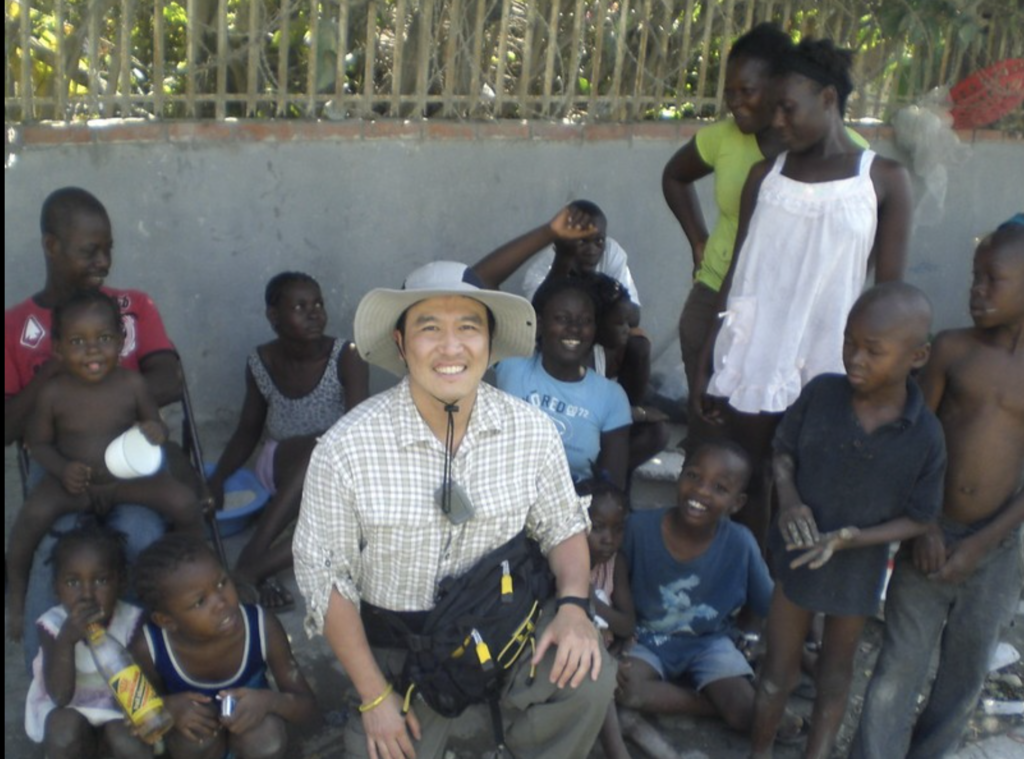
Who’s to blame for crisis in Haiti? A city that was originally designed for several thousand people now is home to a million. Over 230,000 have been killed by the earthquake. Where did we go wrong?
Geopolitical decisions cannot be made in a vacuum. In many ways, the US was partly to blame for exporting poorly-thought out agricultural policy that only hurt the Haitian economy while protecting the US rice and hog farmers. A city that was originally designed for several thousand people is now home to a million.
“The devastation in Haiti cannot be solely attributed to an act of nature,” said Michael Forst, the UN’s Independent Expert on human rights in Haiti. “The hand of man played a major role in this disaster, most obviously in the policies and poor governance that had led to so many Haitians living for so long in a state of poverty.”
In the 1980’s Haiti was self-sufficient in food. The staple food of Haiti – West African rice, had been cultivated there for over 200 years. But then two things occurred that changed the path for Haiti’s local economy: the environmental degradation, and the unilateral trade liberalization policies signed by President Clinton. The subsidies provided to American rice farmers in the 90’s resulted in the rice they export to Haiti been cheaper than locally produced rice. This resulted in greater poverty and food insecurity. Additionally, the Iowa pigs sent to Haiti frequently got ill and couldn’t flourish under tougher Haitian conditions. Today, Haiti, imports 80% of its rice and 60% of its food supply.
Haiti would require the assistance from the UN and the US in order to recover from this earthquake. But to succeed long term, the country would require a significant lifeline from the Diasporas — Haitians who have left their country and are living successfully in North America and abroad. This population, who are not tainted by the corruption that is so rampant in Haiti, continue to send remittances, creating new jobs back home, and providing a road map for bilateral relationships that will result in huge improvements to the Pearl of the Antilles.

“I’m convinced that 20 years after Haiti rebuilds, she’s gonna be better than the Trinidads and Barbados of the Caribbean,” said Mike Singh CEO of Telkom Caribe. “I like to stay with the underdog, and I’m proud to stay with the underdog. In fact I might have been a Haitian in my last birth.”
“Is there a way we can get access to laptops for every school children and Haitians who can benefit from learning?” I asked Mike.
“Absolutely, we need to continue to build bridges so the rest of the world can understand their true needs and use innovation to pave the road ahead.”
